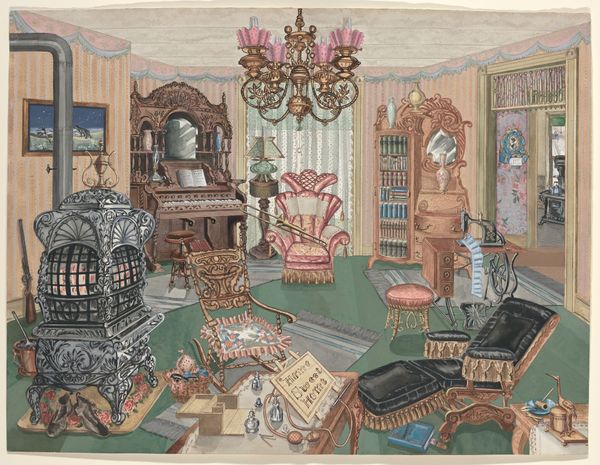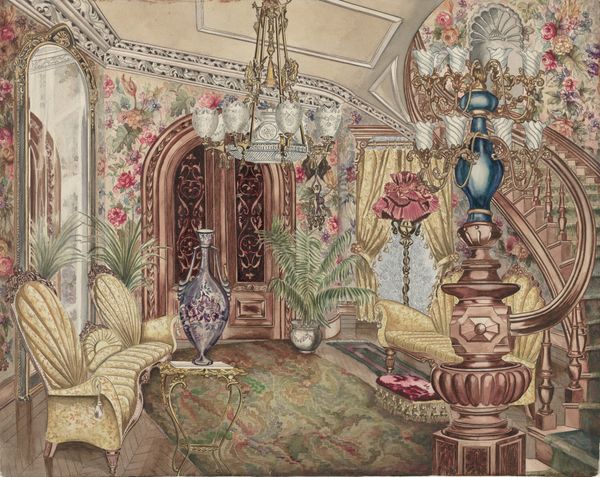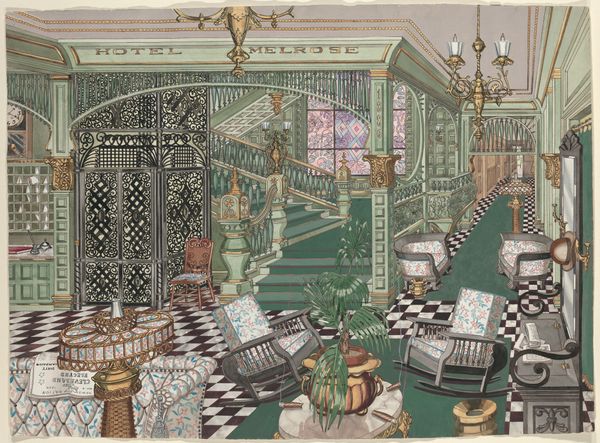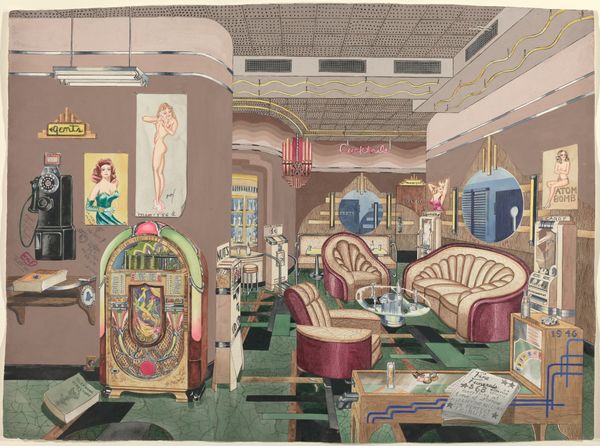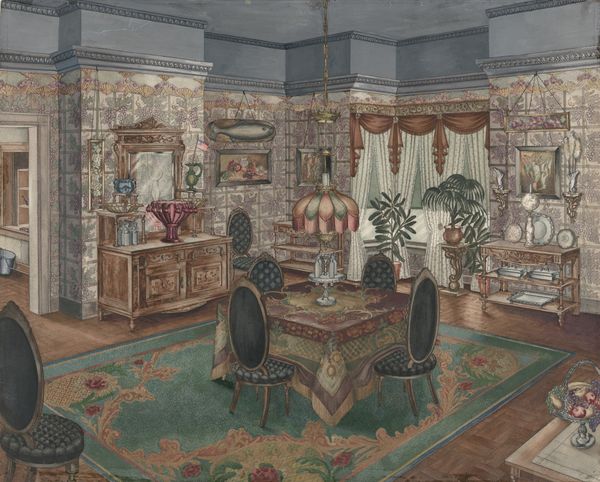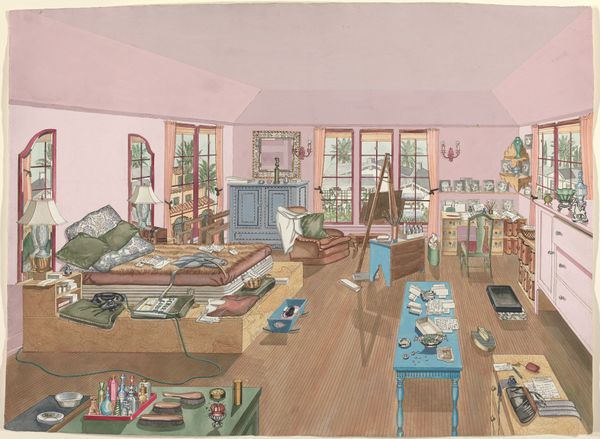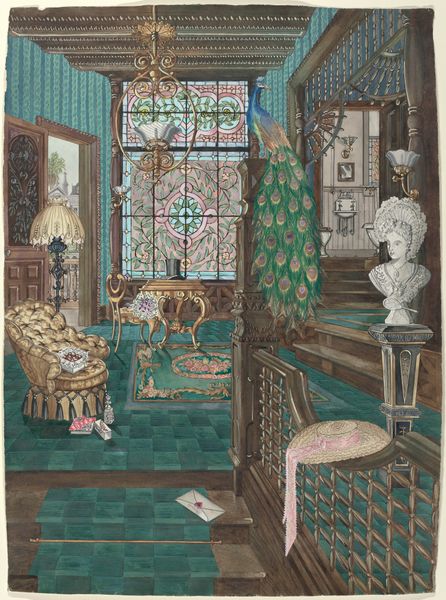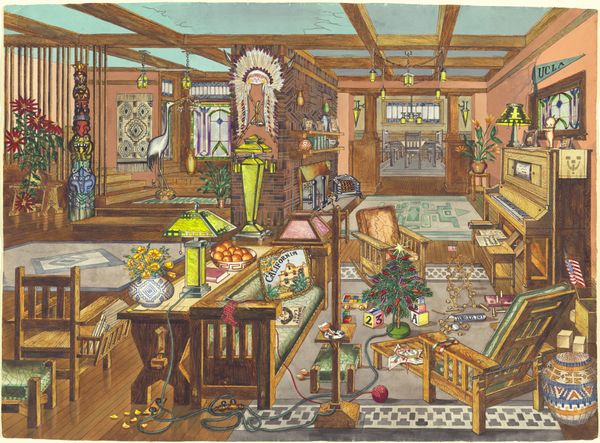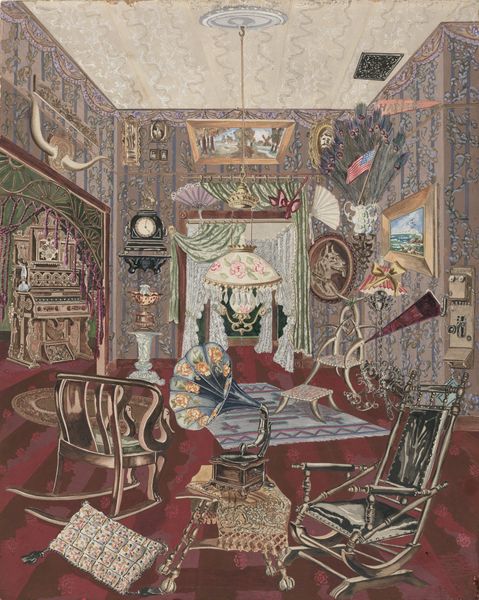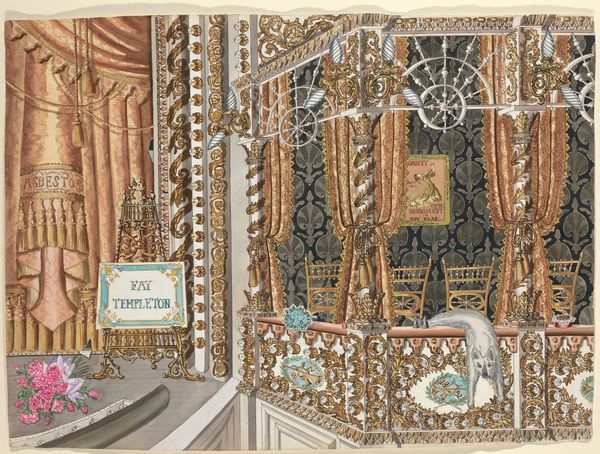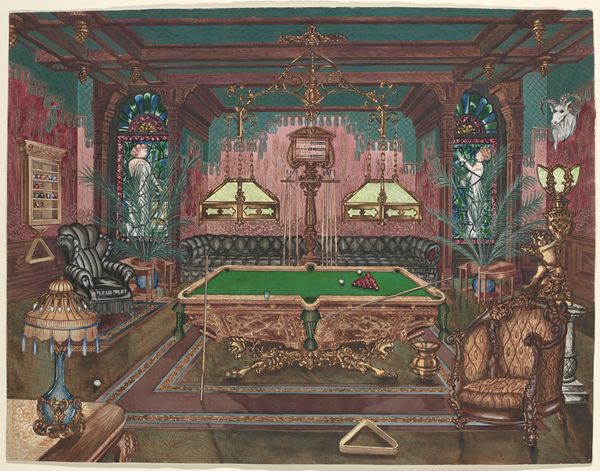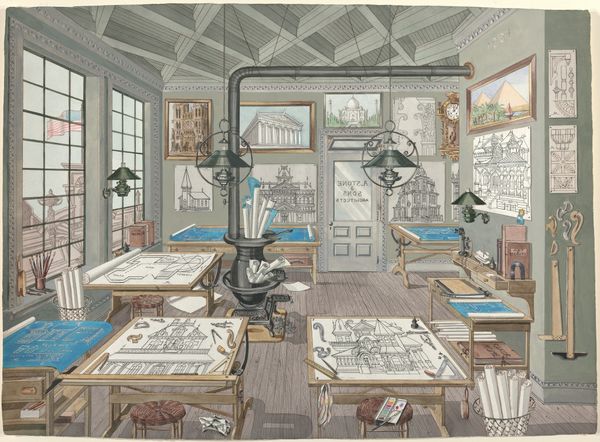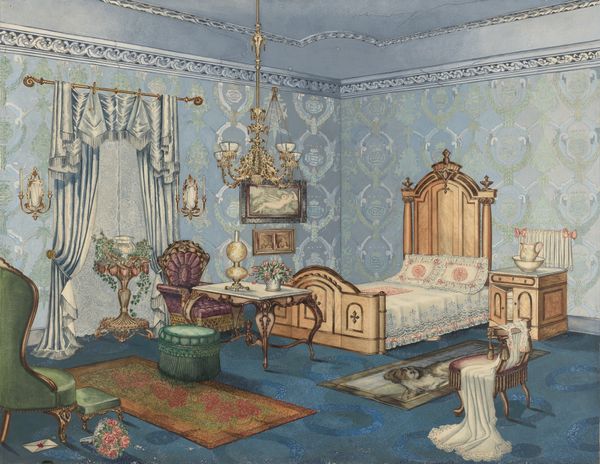
Dimensions: overall: 56.9 x 78.3 cm (22 3/8 x 30 13/16 in.)
Copyright: National Gallery of Art: CC0 1.0
Curator: This is Perkins Harnly’s “Millinery Shop, 1905,” created sometime between 1935 and 1942. The artwork is rendered primarily in watercolor and gouache, depicting an intimate, interior view of a hat shop. Editor: My first impression is that of faded elegance. The colors are muted, almost dreamlike, and there’s an incredible level of detail in the composition itself, giving a panoramic feel. Curator: It’s interesting you mention dreams, as hats in dreams often represent the roles we play, or the persona we present to the world. In a shop like this, you're quite literally choosing your projected identity. Editor: And look at the arrangement – the almost theatrical staging of each hat. Harnly is so concerned with linear perspective and spatial arrangement that this becomes more than just an illustration; it suggests deeper visual connections. Curator: Right. The hats themselves are visual emblems. The large, elaborate ones speak to aspiration and perhaps status, while the simpler ones might symbolize modesty or practicality. Think of what each style was trying to communicate during that Edwardian period. Editor: Observe the details. The furniture seems delicate, almost impermanent, hinting at a sense of transience despite the opulence. Even the shadows feel soft, adding to the melancholic mood. The hats almost seem to be silently watching an empty room. Curator: Considering it was made decades later, it’s possible Harnly was painting a memory, imbued with the subtle changes that time etches on our recollections. Millinery, too, could stand for a particular moment in fashion, representing a nostalgic vision for a disappearing trade. Editor: Well, whether perceived as history, personal experience, or aesthetic pleasure, the harmony lies in Harnly's presentation of light and its impact on form and volume—it is a celebration of refined artistic perception. Curator: A striking exploration of memory and style indeed, which encourages a dialogue across temporal plains and between inner and external perceptions. Editor: Yes. And perhaps it inspires an admiration for the beauty of structural and spatial harmonies.
Comments
No comments
Be the first to comment and join the conversation on the ultimate creative platform.
